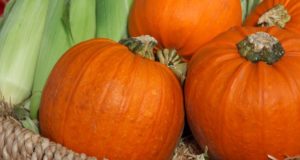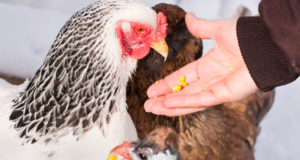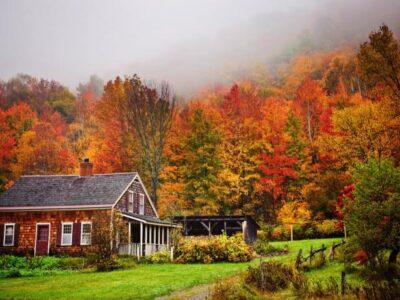
Image source: HGTV
Homesteading is growing in popularity, as Americans look to get back to the basics. While images of log cabins out in the woods or farms miles away from civilization come to mind, you could technically homestead in a heavily populated area such as a neighborhood if you wanted.
Wherever you live, you’ll discover an entirely new sense of independence not only because you’re “living off the grid” and away from society, but because you are no longer dependent on outside sources, such as grocery stores and restaurants, for your survival.
Here are the important aspects of homesteading:
1. Plan Ahead
You can’t just start homesteading by blindly thinking you can copy what people do on outdoor TV shows. You have to put a solid plan in place before you can take any action. Assess what your long-term goals are. Do you want to live entirely on your own food or only partially so? Do you want to be completely off the grid? Are you making your home more self-sufficient, or do you plan on purchasing and taking care of 50 acres or more of land? You can know everything there is to know about homesteading, but without a plan you’ll run into mishaps and troubles down the road.
2. Choose An Energy Source
If you truly want to live completely off the grid, you need renewable energy sources that will make you totally independent. Examples of renewable energy sources include solar panels, hydropower, wind turbines and even wood. (Read: How To Prepare Your Family For Going Solar.)
3. Become A Winterizing Expert
Your homestead needs to be just as comfortable during the wintertime as it is in the summer. If you live in warmer climates such as the Southwest or Southeast, than winterizing may not apply to you.
Examples of steps you have to take to winterize your home include cleaning out the gutters, cleaning your woodstove and pipes, stockpiling firewood (which you can never have enough of), placing cages over plants and trees in your garden, pulling up garden supports, and moving your livestock off pasture.
4. Start A Garden
Being self-sufficient requires a garden. You’re more than welcome to try to live off the land by hunting for wild game and plants, but trust me: Growing a garden is far easier. All that a garden needs to be successful is patience and knowledge. To get the most out of your garden, you can create your custom fertilizer by combining together compost, grass and leaves.
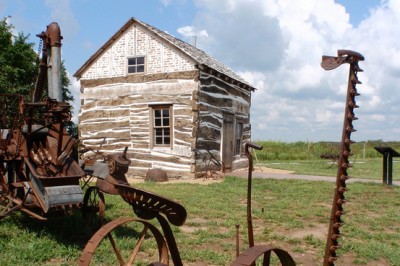
Image source: WSJ
By gardening, you create a constant supply of food all year long. All harvestable plants can be divided into two groups: hardy and non-hardy. Non-hardly plants are planted in the spring and summer, while hardy plants are strong enough to be planted in the fall and winter months. Produce that is grown on your own land with the right compost will be far more nutritious than the produce you buy at the grocery store – and far cheaper, too. If you have any extra produce, you can sell or trade it with your neighbors for extra profit.
Here are some tips for beginners: fruits and vegetables ripen at different times of the year, so you can have a year-round garden; an herb garden will supply you with not only food but also natural medicine; and crop rotation will help you make the most out of the space in your garden. Also look into companion planting, which is a technique to plant the most plants in the smallest amount of space.
5. Buy The Right Pet
Every homestead should have at least one large breed of dog. Not only are dogs excellent companions, but they will guard your homestead and protect your family and livestock. Look for breeds that are large enough to be intimidating to intruders and that are intelligent, responsive, active, good with children, and protective of their owners.
While often overlooked, cats are excellent homestead pets. In rural areas especially, small creatures such as mice, rats, moles, garter snakes, and other rodents and reptiles are notorious for dealing damage to gardens and property. Having a number of outside, shorthaired cats will keep the pest population in your homestead down significantly.
6. Choose Livestock
Chickens are some of the easiest farm animals. They’ll provide you with a steady source of eggs and even meat. Simply set up a coop and a nesting area for them to lay their eggs, and provide chickenfeed and water. Alternatives or additions to chickens include geese and ducks.
New Survival Seed Bank™ Lets You Plant A Full Acre Crisis Garden!
Rabbits are another good homestead livestock. They require very similar living conditions and level of care as chickens, and are excellent sources of fertilizer for gardens. The average female rabbit (a doe) will produce up to eight young per litter, and she can have multiple litters each year. Assuming you start out with at least two mating pairs of rabbits, you’ll be able to feed your family with rabbit meat at least once a week.
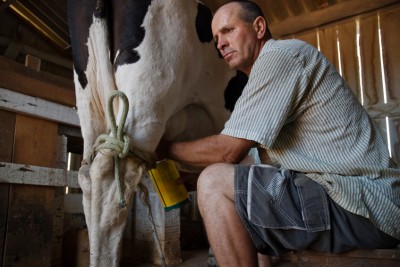 Other excellent livestock animals are sheep, llamas, goats and pigs. Not only are all good sources for fertilizer, but llamas and sheep are a good source of wool, pigs of meat and goats of dairy. Dairy won’t just provide your family with milk, but you can make it into other dairy products for your family: butter, yogurt, cheese and even ice cream.
Other excellent livestock animals are sheep, llamas, goats and pigs. Not only are all good sources for fertilizer, but llamas and sheep are a good source of wool, pigs of meat and goats of dairy. Dairy won’t just provide your family with milk, but you can make it into other dairy products for your family: butter, yogurt, cheese and even ice cream.
If you have enough land, you should give special consideration to raising cows. As a general rule of thumb, you’ll want a minimum of one acre of land per cow. With a cow, you’ll be given an excellent source of meat, organic milk and fertilizer. Raising cows can also give you an additional source of income once each year if you sell the meat to those in your community.
While not considered livestock, bees will definitely prove their worth when it comes to being self-sufficient. Honey is one of the best long-term survival foods that you can grow naturally; it can also be sold to members in your local community.
7. Don’t Forget Knives, Tools and Guns
The knife has always been the most versatile, simple tool – even with a plethora of modern inventions. Make it a habit of carrying a good, fixed-blade knife everywhere you go around the homestead.
Even if you’re not a certified builder, plumber or engineer, you have to maintain your homestead. Not only will you need to get very familiar with basic tools such as saws, screwdrivers, hammers and nails, but you’ll need to purchase and become acquainted with more unique tools as well.
Owning a variety of guns is also necessary for homesteading. Guns provide you with security, a means to hunt, and recreation. You should own a number of rifles, shotguns and handguns in common calibers, and be proficient with each one. Keep at least 1,000 rounds per caliber in storage.
8. Make Your Own Products
This is even more important during a natural disaster or a man-made disaster such as a grid-down scenario. You’ll be effectively switching your role from consumer to producer. This means you should have the ability to make basic things such as soap, candles and clothes.
If you can do that, you’ll truly be self-sufficient. As for materials to make new clothing, you can use wool or skin from sheep and llamas.
9. Don’t Waste Anything
Today, most people will waste things such as water and food in large quantities because they know it’s easy to replenish. A homesteader who is truly self-sufficient doesn’t have this option. Use every egg that comes from your chicken. Gather every last drop of rainwater. Eat every last bite of meat. Rotate out your plants as soon as one dies. Don’t let anything that could be used to make custom supplies go to waste.
Each of the basics and skills we’ve discussed could easily be expanded into an entire book. Homesteading is a fulfilling and rewarding way of life, and many people are embarking on it as a lifestyle. Hopefully, it will be just as gratifying for you and your family as it has for countless generations.
What would you add to this list? Share your thoughts in the section below:
Homesteading? Then You’ve Got To Stockpile Hydrogen Peroxide. Read More Here.
 Off The Grid News Better Ideas For Off The Grid Living
Off The Grid News Better Ideas For Off The Grid Living


